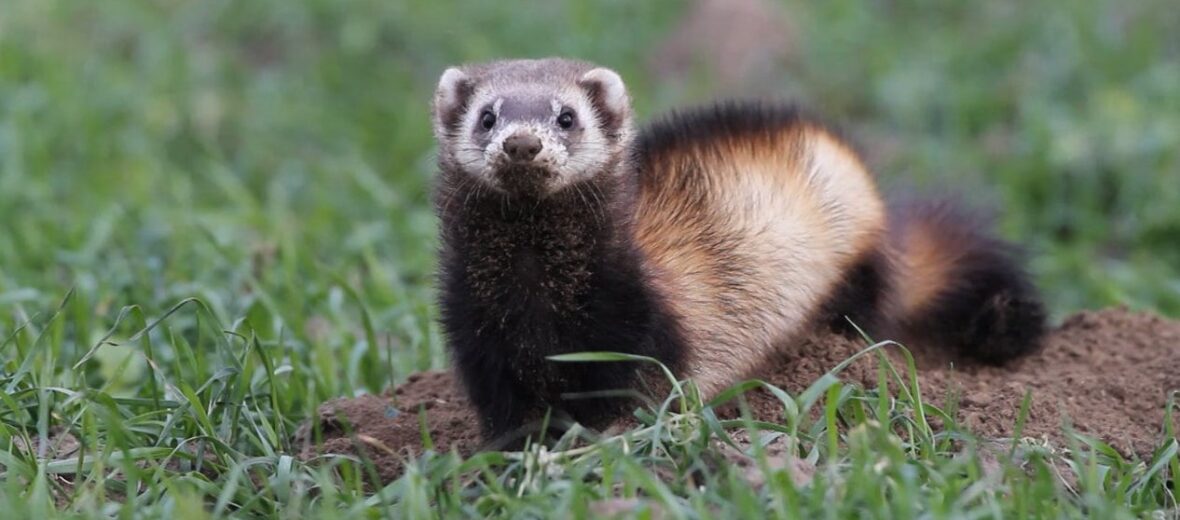
The Siberian polecat, aka steppe polecat, masked polecat, or Eversmann’s polecat, looks just like a pet ferret. However, these critters are not friendly towards people… quite the contrary. These polecats are wild members of the weasel family and are meant to stay that way. They can be found in shrublands, pastures, steppes, and cultivated fields of central and eastern Europe and throughout western, central, and eastern Asia. The Siberian polecat is listed as Least Concern by the IUCN.
First the Stats…
Scientific name: Mustela eversmanii
Weight: Up to 4.4 lbs.
Length: Up to 22 inches, plus a 7.2 inch tail
Lifespan: Up to 5 years
Now on to the Facts!
1.) Siberian polecats are nocturnal (active at night). However, they can also exhibit crepuscular (active at dawn and dusk) habits.
2.) They are also nomadic and travel to wherever the prey happens to be. Then moving on, once the food source has been depleted.
3.) These fierce critters prey on ground squirrels, pikas, hamsters, young marmots, injured adult marmots, voles, chickens, fish, birds, and carrion (dead animals). They also will take partridges and grouse.
4.) Owls and hawks prey on polecats.
5.) Polecats are polygynous (males mate with more than 1 female).
But wait, there’s more on the Siberian polecat!
6.) After up to a 43 day gestation (pregnancy), females will birth up to 6 kits.
7.) A male is called a hob, a female is called a jill, and a baby is called a kit.
Did you know…?
One predatory tactic is to perform what is lovingly referred to as a war dance. This involves a clucking sound, leaping and jumping about in order to entrance their prey. Then they attack.
8.) The Siberian polecat will sometimes hybridise (interbreed) with the European polecat.
9.) These polecats don’t dig their own burrows, but rather take over the burrows of other animals that have either abandoned them or that have been killed by the polecat.
10.) Unlike ferrets, these critters are solitary. Only coming together to mate.
Now a Short Siberian Polecat Video!
Be sure to share & comment below! Also, check out the Critter Science YouTube channel. Videos added frequently!
Want to suggest a critter for me to write about? Let me know here.




Leave a Reply